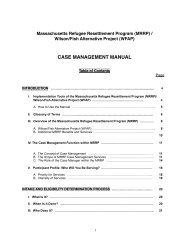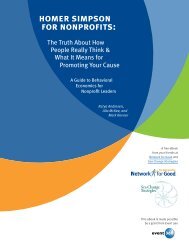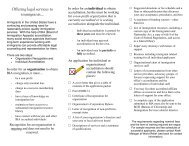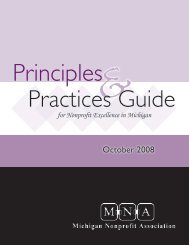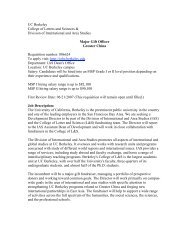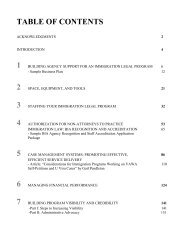Print this article - The Philanthropist
Print this article - The Philanthropist
Print this article - The Philanthropist
Create successful ePaper yourself
Turn your PDF publications into a flip-book with our unique Google optimized e-Paper software.
ishop, whose name is no longer remembered, who spoke at an annual meeting of<br />
the organization in the 1960s. As the story goes, the bishop became impassioned<br />
about the political climate of the day and exhorted the organization never to rely<br />
on government for what the community itself could provide. <strong>The</strong> organization is<br />
ripe with stories that explain “the whys” of its financial success, which include a<br />
quadrupled budget and new $2.5 mortgage-free building in the decade preceding<br />
2002, which was an era of unprecedented cutbacks in Ontario, particularly in the<br />
social service sector. Stories are also imbedded in the organization’s planning<br />
documents, in plaques on the walls of its building and on its recognition wall, in the<br />
way the organization trains new staff, and in the way staff members describe their<br />
work and pitch their proposals to funders.<br />
Collaborative communication strategies reflect the ability of these organizations<br />
to work beyond their own organizational boundaries and to take up<br />
opportunities for joint communication projects on shared issues or services.<br />
This capacity, by definition, leads to broader reach, cost sharing, and new<br />
opportunities.<br />
<strong>The</strong> Capacity to Envision and Implement a Sustainability Model<br />
Because these organizations have the capacity to reflect on change in their<br />
environment and its relationship to the niche they have identified, they are<br />
better able to identify a sustainable resourcing model. Not surprisingly, <strong>this</strong><br />
sometimes follows unexpected changes in their funding, which some describe<br />
as “a near-death experience.” In the midst of crisis, they have turned the<br />
question from “What needs must we meet?” to “What is the most important<br />
work we must sustain?”<br />
Sustainability in these terms involves developing revenue streams from the<br />
systemic creation of value rather than from adjunctive activities (e.g., walk-athons,<br />
galas, and bake sales) that raise funds to create value. Social value is, in<br />
civic investment terms, the return on a funder’s investment in social capital or<br />
the fabric of community. <strong>The</strong> case-study organizations describe looking for<br />
resource-raising opportunities that further their mission while generating revenues<br />
(e.g., from fee-for-service projects), developing their research capacity,<br />
or marketing training based on expertise that they have developed while<br />
carrying out their mission.<br />
<strong>The</strong> work of the Enterprising Non-Profits Program of the VanCity Community<br />
Foundation, one of the case-study organizations, reinforces the link between<br />
successful revenue opportunities and the core activities of an organization. <strong>The</strong><br />
program, which supports nonprofits in developing social enterprises, was<br />
created following a pilot program with 10 nonprofits spearheaded by the<br />
Foundation with the involvement of United Way of the Lower Mainland and<br />
VanCity Credit Union. An important lesson from the pilot was the necessity of<br />
consistency between the organization’s mission, values, and goals, and its<br />
enterprising venture (Simpson, 2002).<br />
252 <strong>The</strong> <strong>Philanthropist</strong>, Volume 19, No. 4



